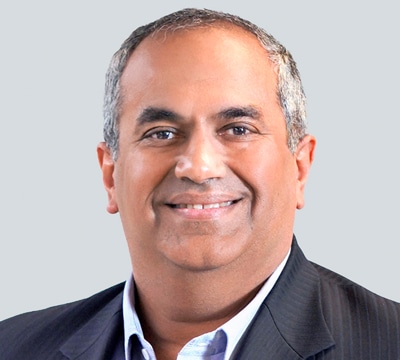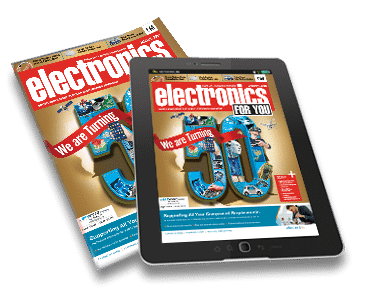SiTime positions itself as a leader in precision timing devices, asserting that their MEMS devices surpass traditional Quartz counterparts. To understand why that matters and to whom, Yashasvini Razdan and Nitisha Dubey spoke to Piyush Sevalia, Executive Vice President of Marketing, SiTime Corporation. Here are key excerpts from their conversation…

Q. How would you explain the category of semiconductors known as ‘precision timing’ to a non-technical CEO of your customer?
A. In the realm of electronics, precision timing acts as the heartbeat—provided by a timing chip. For example, in a PC with an i7 processor operating at up to 3.9GHz, the frequency of operation, 3.9GHz, is the heartbeat, and all the functions that the processor or the PC perform are referenced to this heartbeat. Every electronic device needs one or more timing chips to operate correctly. Precision timing makes a system run faster, more intelligently, and, in some cases, more safely, as in the case of automated driving. Automated driving won’t be safe until you have a massive infrastructure that is going to allow the car to make decisions. The timing needs to be accurate to make critical decisions in an electronic system quickly.
Q. How is the fast evolution of electronics tied into the solutions you offer?
A. Our precision timing devices are programmable to accommodate any frequency within their specified range. For instance, if a device has a range from 1 megahertz to 220 megahertz with no limitations, the device can be programmed to any frequency within this range, with up to 6 decimal places of accuracy. Additionally, voltage levels such as 1.8 volts, 2.5 volts, or 3.3 volts can be programmed, along with various output signalling levels. This level of customisation allows customers to adjust frequency for Ethernet systems to minimise error rates or to customise for non-standard frequencies, regardless of the processor or Ethernet chip they use.
While obtaining a custom frequency from a standard supplier could take 12 to 16 weeks, our approach allows for on-the-spot programming, be it 156.25 or 156.25391 megahertz. This can be done either by our team or by the customer using our programmers. For large orders, we will efficiently program the devices in a high-volume facility and promptly ship them to the customer.
Programmability also enables optimisation for voltage, drive level, and other critical parameters in system design. We introduced our first product in 2007. We have shipped about 35,000 unique part numbers worldwide across those 16 years, and every year it grows by 2000, 3000, and 4000 new part numbers.
Q. Is the programmability factor the only difference between your MEMS technology and the traditional quartz?
A. I think the most significant difference is the resilience and reliability of the device—how resilient or robust it is to environmental disturbances like vibration, shock, temperature changes, airflow, etc. Our claim to fame in MEMS technology is that we are much more resilient and reliable than quartz devices. Of course, there is programmability, and the third one is that we’re a semiconductor company that uses the semiconductor supply chain, which is much more flexible than the quartz people who use dedicated factories. We manufacture at locations used by the semiconductor industry. For example, we use TSMC for our analogue, Bosch for our MEMS, and ASE for our packaging—all companies that semiconductor suppliers such as Marvell, Broadcom, and AMD would potentially use.
In semiconductors, we always have this aspect of building features that deliver value to the customer. For example, we have something called drive strength programmability on the outputs. It allows us to change the output drive strength to match the strength of the PCB trace more closely, resulting in lower noise and higher performance. Failure to match the PCB trace impedance to the output of the device can lead to reflections and noise on the trace, causing devices not to work correctly or reliably. So, we can program the drive strength. For instance, if someone wants to drive two loads with our device instead of one, we will increase the drive strength to accommodate two loads.
Q. What are the key customer segments for your precision timing solutions? Which are the top three?
A. A segment where our value is very clear is the aerospace and defence market, because it is subject to very extreme environmental conditions and needs a timing device to survive that environment. Another market is communications and data centre equipment, where the value we provide solves significant problems.
The third place is automotive, where there are a lot of innovations happening. The amount of electronics going into a car is increasing dramatically, so that is another area where we have a lot of value. Other segments include the industrial segment with applications such as programmable factory automation, programmable controllers, factory automation, servers, motors, etc, and the mobile IoT and consumer market with applications such as smartwatches, consumer cameras, displays, etc.
Q. Are the customer segments in India similar to your global markets, or very different?
A. Since these are the segments where the problems are more challenging, they are pretty similar. The Indian market has witnessed a tremendous pickup of electronics activity in the last few years due to government policies and probably other geopolitical considerations. Based on India’s current market, two-wheelers can benefit from our timing devices, and that may be a new market for us to explore and figure out what kind of value we deliver to them.
Q. Where would you place India as a market? How important is it for you right now?
A. We are seeing a lot more activity and designs originating in India. Based on our recent interactions with customers, we believe we can provide something of more value to electronics customers in India—an alternative to what they have been using. So, we must talk to customers, show them data, and let them decide.
Q. Do you have partners in India?
A. We are already collaborating with companies such as Univa, Avnet, Arrow, and RFMW, which is a distributor. They provide front-end support to our customers with design resources and basic technical-level help. For highly technical questions, we connect the distributor FAEs (field application engineers) and customers’ engineers with our support staff in Ukraine or Santa Clara.
Q. Are you looking for new partners apart from Arrow?
A. Regarding partners, we have a programming partner in India. They program our blank devices and provide samples to customers for just-in-time needs. We have a semiconductor companies partnership program to whom we provide engineering technical support to solve difficult timing problems on their reference validation platforms or customer evaluation boards, so their customers can benefit from our product value. We also have and seek independent design houses (IDH) whom we support. These white box designs then take the form of OEM products. So, that is the level of partnership that we have established. The evaluation process involves their assessing whether our offers benefit them. Simultaneously, we assess factors like their business, customer connections, and overall value, determining the value for us to provide our services.
Q. How do you see your MEMS devices evolving to support future trends, and how do they compare with the technology trends with respect to your competitors?
A. The performance requirements of timing devices will only get more stringent as we witness the shift in precision timing from 4G to 5G. We saw timing improve threefold from 100 gigabit Ethernet (GbE) to 800 GbE. There’s an additional variable: electronics itself is changing, with faster transmission and lower latency, making the performance of the timing device more critical.
We believe that MEMS technology can meet these evolving demands. Quartz technology has done a tremendous job of keeping up for the last 100 years, but at some point, you must assess the rate of innovation and determine which technology will perform better in the future. We believe that MEMS technology has an advantage here. Our innovation is not stopping; we will continue to innovate at the same rate. So, for the future of timing devices, we see MEMS as the technologically superior choice.












